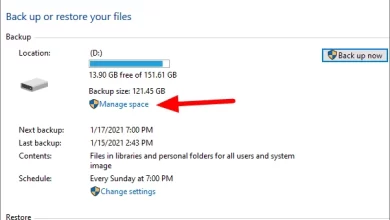A Step-By-Step Guide To Localize Your Software

As economic uncertainty is rising due to COVID-19, most businesses find it challenging to make ends meet due to low margins. Since the pandemic has put the global economy into a severe financial crisis, smart companies are finding ways to crawl into international markets to survive. While giant companies make hefty investments to launch their stores overseas, small companies don’t have enough funding and resources.
Fortunately, digital marketing forums provide a roadmap to reach global audiences, but does it work for every business? Service providers, especially software companies, face many problems in their expansion journey.
In addition to the lack of cultural understanding, you will encounter substantial language barriers. After all, an American client can’t read or write in Spanish or Japanese. However, don’t let these barriers overrule your growth prospects because there is a way out for every problem. Have you heard of software localization? It is a process of translating and adapting software into different languages. It satisfies all the technical requirements of your new target audience while catering to regional customs.
Moreover, you have to modify all user-visible components. Similarly, make slight changes to the user interface, images, and terminology to ensure local users can interact with the software. Since localization requires attention to detail and brilliant development skills, some tips can come in handy.
Here is a practical step-by-step guide to localize your software and execute a successful expansion strategy:
Begin Internationalization Undoubtedly, developing software, applications and then localizing them is no easy feat. Most apps don’t support multiple languages; as a result, you have to retrofit them. It means you have to add components and elements to ensure it supports different languages.
Firstly, start segmenting, filtering, and parsing the files because file types like YML and JSON have structure issues. Encourage your development team to follow the best practices and ensure a smooth localization process.
Nevertheless, if it doesn’t seem like your cup of tea, look for the best translation companies to get some professional assistance. They are familiar with all coding and software testing protocols, helping you translate software into other languages. Besides, they will also perform manual workarounds to see whether the product code is understandable for global audiences. In short, these companies provide a pathway to expand into international markets and enjoy higher sales.
Focus On Your Strings
The primary purpose of software and applications is to make people’s life straightforward. But a tricky and complicated interface can make it troublesome for users to complete their tasks. In addition to removing language barriers, you have to streamline the user interface. Start resizing the elements such as graphic assets, buttons, navigations to close doors for loading errors.
Moreover, once you have set the interface as per new target audiences’ preferences, run automated translation tests. It will help in verifying consistency with the term-base and terminology. Besides, ‘debugging’ is another essential step for localizing the software. It considers linguistic issues – the problems with accuracy or context of the translations, typos, spelling, and cultural-friendliness.
Ensure Images And Symbols Make Sense
Unsurprisingly, the software’s design plays a crucial role in localization. You have to ensure all chosen images are inclusive and appropriate for each of your target markets. After all, symbols and gestures have different meanings in different countries. Usually, thumbs up is a positive gesture, but people see it as slang in West Africa and Russia. Therefore, check all your illustrations for offensive trip-ups in other markets to avoid offending customers. Likewise, you have to make sure there are no confusing or meaningless symbols in the software.
Ensure Images And Symbols Make Sense
Unsurprisingly, the software’s design plays a crucial role in localization. You have to ensure all chosen images are inclusive and appropriate for each of your target markets. After all, symbols and gestures have different meanings in different countries. Usually, thumbs up is a positive gesture, but West Africa and Russia consider it slang and informal.
Therefore, check all your illustrations for offensive trip-ups in other markets to avoid offending customers. Likewise, you have to make sure there are no confusing or meaningless symbols in the software.
Keep Tabs On Terminology
Every company must develop terminology assets that would incur translation decisions as you progress. These are the translation memory, the glossary of branded words, and industry terms in the software. Although the aim is to maintain consistency, you often have to make some branding shifts during the localization process. After all, you have to adopt styles that align with your new target markets’ preferences.
Similarly, you have to make amendments to the term-bases and glossary terms. Since these characterize your product and brand, you have to be specific and translate them flawlessly. Suppose you don’t set up a glossary before localization begins. In that case, your slogan and command terms within the app will have different translations. Instead of sending out a wrong message, it is crucial to get all terminologies right.
Create A Style Guide
Whether you are expanding locally or internationally – don’t miss out on branding. For all your messaging and logos, your software company has to stay consistent across every market. Thus, you have to provide your translators relatable context through a style guide. It will add consistency while answering all questions the locale might have regarding your software.
Include the following in your style guide:
- Focus on your tone, especially the voice and formality, to ensure professionalism.
- Dig into audience information to have a keen understanding of persona, value proposition.
- Use appropriate grammar wherever applicable.
- Use product names and branding terminology to establish brand loyalty among users.
Run Localization Tests
One of the most significant challenges with software localization is ensuring the correct context. Sometimes, companies successfully translate into a suitable language, but words and sentences don’t make sense.
Therefore, you have to run a test to identify potential context errors and bugs in the system. You can utilize visual tools or translators to comprehend the flow of application scenarios and context.
However, many companies skip the testing phase, considering they have already invested in debugging. Thorough testing of localized software is the only way to find and resolve problems before customers face interruptions. Thus, hire people who have proficiency with bug tracking systems and expertise in reading and executing test plans. Successful testing will give a green signal while opening your doors to international markets.
Conclusion
Usually, the time-consuming localization process intimidates the companies. From internationalization, style guides to using appropriate symbols – you have to make significant software changes. The entire process requires effort and time, but the results it brings make every effort worth it. Alongside helping you step a foot into global markets, you can enjoy higher sales and profits in the longer run.




